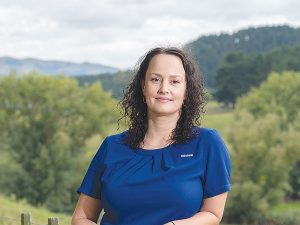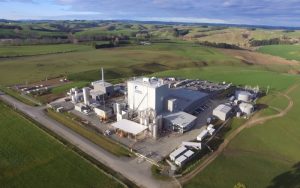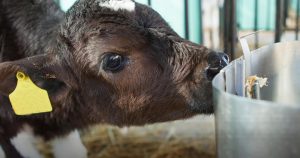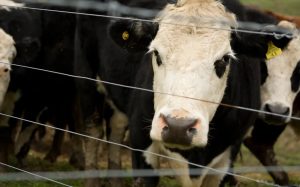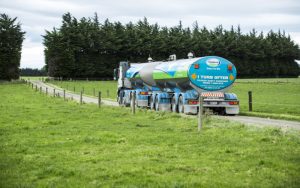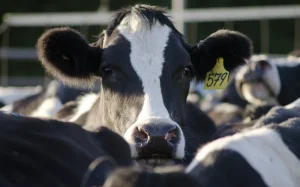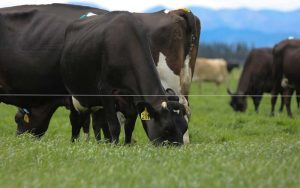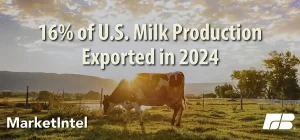
Two options have been discussed at a round of workshops and online webinars with a third option – a combination of the other two.
Legislation already has a means to include agriculture in the Emissions Trading Scheme (ETS) and from 2025 farmers will start paying for their emissions.
If it’s through the ETS, methane emissions will be priced at the rapidly climbing New Zealand carbon price.
The Government has set a target of 10% reduction in methane emissions by 2030 with further reductions required by 2050 and all other long-lived gases at net zero by 2050.
It has given the agriculture sector a chance to come up with an alternative way to price its emissions with the aim of bringing those emissions down.
The alternative must be presented to the Government by May 31 and from there the Climate Change Commission and Government will consider it before legislation is drafted.
Sector groups and farmers will then have the usual opportunities to submit on the draft legislation.
That alternative proposal to the ETS is being developed through He Waka Eke Noa.
He Waka Eke Noa (HWEN), We’re all in this together, is the Primary Industry Climate Action Partnership and includes representatives from a range of farming sector groups including DairyNZ and Beef + Lamb NZ along with the Government. HWEN has come up with the options farmers are being asked to provide feedback on.
We’re taking a look at each option, showing what it could mean for farmers and answering some frequently asked questions.
What’s wrong with ETS for agriculture?
- No split gas approach
- Methane priced at CO₂e – 1t methane deemed 25 x 1 tonne CO₂e
- Price of carbon NZU set by market
- Emissions calculated based on national average figures
- Plants eligible for sequestration credits limited
- No commitment on full revenue going back to research and technology for emission reduction
If agriculture emissions were to be priced within the New Zealand Emissions Trading Scheme (ETS) all farm GHG emissions would be priced based on the NZ price of carbon.
That price is set by market demand – the supply is capped.
The price of carbon in the NZ market has been on a rapid rise.
Initially the price was $25/NZ unit (NZU). In early February it was $77 and by late February it was $82.50.
By 2030 forecasts put it at $136/NZU but at the rate it has been climbing it could be higher.
The point is, farmers have no control over that price – it’s set by the market. Methane would be treated just like other long-lived gases such as nitrous oxide and carbon dioxide and farmers would pay for it based on carbon equivalents (CO₂e) as they would all types of farm emissions.
Initially farmers would pay for 5% of farm emissions – 95% would be termed free allocation but that free allocation is likely to reduce by 1% per year.
It’s not all cost though – they could also receive a payment of 1 NZU for every tonne of carbon sequestered based on the area of ETS eligible forests on their property.
The important note here is “eligibility” and at the moment riparian planting and many natives aren’t eligible.
The biggest issue for livestock farmers is that by far their largest emission source is biogenic methane – burped from their ruminant animals – largely dairy cattle for dairy farmers.
At the moment the standard way of converting methane to CO₂e is to use the greenhouse gas warming potential over 100 years (GWP 100).
GWP100 puts methane at 25 times CO₂ so the CO₂e of a tonne of methane would be 25 times a tonne of CO₂, making it an expensive commodity.
The payment system for the ETS would be through the processor.
The processor would calculate the emissions based on the national GHG inventory – so the average emissions estimated to produce a kilogram of milksolids.
That means every farm is treated equally but there’s no recognition of onfarm efforts and reductions.
The dairy processor would report on the emissions and purchase the equivalent NZU and it is expected they would then pass that cost back to the farmer.
The fertiliser sector will also pay for emissions and will have to purchase NZU. Costs are expected to be passed back to the farmer.

Farm-level levy
Farmers would pay a price for their emissions based on their unique emissions profile.
A central calculator will determine what the farm’s emissions are, based on inputs to a model.
The advantage is that a farmer making efforts to reduce emissions through available technologies and practices will have lower emissions.
Methane emissions will be calculated separately from nitrous oxide and carbon dioxide and an equation will be used, multiplying the weight of the gases times the price and subtracting the sequestration credits.
To calculate the price farmers will pay
A + B – C = Price. A is the weight of methane multiplied by the unique methane price.
B is the weight of long-lived gases – such as nitrous oxide and carbon dioxide, multiplied by the unique price.
C is the sequestration emission benefits multiplied by the unique price.
The model to calculate the weight of each farm’s emissions is being built.
An implementation or advisory board will set the unique prices for onfarm methane emissions and long-lived gases – which will be a discounted rate of ETS carbon price.
The implementation board will also set the CO₂e rates applied to sequestration.
The revenue collected is recycled back to farmers which could be through incentives and rebates for taking up technologies and practices that reduce emissions.
The model to calculate the emissions is being worked on and there’s no set decision on how the rebates and incentives would be structured or what prices would be put on these.
One option for setting the rebate or incentive price could be to use a multiplier of the price paid for the emissions in the first place.
For example, a farmer could be paid 2-2.5 times the methane price per kg of emission for a reduction resulting from a specific technology compared with the price they paid for the emission.
As farmers reduce emissions they’ll effectively be paying less per kg of emission.
There’s more detail on possible rebate and incentive systems in the discussion document.
Option two
Processor level, hybrid levy
Just like the ETS, under this option the emissions cost will be determined at the processor level.
Like the ETS the emissions weight is determined by the national average emissions factor for the quantity of milksolids sent. So, it’s an average not the actual weight of emissions produced by each farm.
It uses a similar A + B – C = Price method but there are two key differences to the ETS. One – there is a unique price set for methane and the long-lived gases.
Two – the -C comes in after the Price is arrived at through A + B = Price.
The processor pays the Price to what’s called the Implementing Agency and will also pass that Price back to its suppliers to recoup the cost. The net cost to farmers can be reduced if they enter into either an emissions management contract (EMC) which shows how a farmer has reduced their emissions using a technology or practice, or they can enter into a sequestration management contract (SMC) which shows the farm has sequestered additional carbon compared to a business-as-usual situation.
Price – C = Net price where C is EMC +/or SMC. The implementing agency holds the money paid by the processor and can use it to reinvest back into new technologies and research to help farmers reduce emissions. If farmers want to enter into an EMC or SMC they will do so with the implementing agency. The funds collected from the processor paid charges will be used to pay the “rebates” for the contracts. The details of the contracts are yet to be finalised but the consultation document shows they are likely to be set for three or more years and may only be paid at the completion of the contract.
Onfarm profitability effects
So how do these options stack up when it comes to their effects on farm profitability and of course their key purpose – emissions reduction?
That’s where the devil really is in the detail because the unique price put on each emission will be critical as will the amount returned to farmers as incentives, rebates, sequestration and emissions contracts.
The consultation document shows results of modelling carried out for 2025 and 2030.
In the 2025 model calculation methane is priced at 11c/kg, nitrous oxide is $4.25/t CO₂e (a 95% discount on predicted NZ ETS carbon price) and carbon is $85/t CO₂e.
In the 2030 modelling methane is priced at 35c/kg, nitrous oxide at $13.80/t CO₂e (a 90% discount) and carbon is $138/t CO₂e.
By 2030 the models suggest an 800-cow Canterbury dairy farm could be paying out $55,290 a year under the Processor Level Hybrid Levy and receiving emissions and sequestration credits of $6697.
Sequestration
Carbon sequestration is recognised as a means to offset and reduce emissions.
He Waka wants to recognise more onfarm plantings and long-term native areas than what is recognised in the ETS.
The baseline year has been set as 2008 to recognise plantings across a number of categories because satellite imagery can help verify additional plantings, regeneration and additional protection or management from that point.
Woodlots, shelter belts and riparian plantings can all be recognised in He Waka Eke Noa options although some conditions apply.
The concept of “additionality” has been taken into account – meaning new or above business as usual sequestration.
Vegetation that’s recognised under He Waka Eke Noa would need to be maintained or face liability if they are cleared – in the case of permanent vegetation or not replanted – in the case of cyclical vegetation.
More detail on the options and modelled costs for a range of dairy farms can be found in the consultation
document available here:
tinyurl.com/2p8buv6k
Watch a Feedback roadshow webinar run by DairyNZ and Beef + Lamb NZ:





